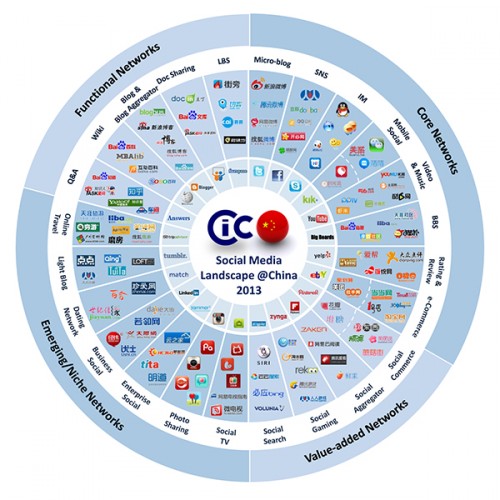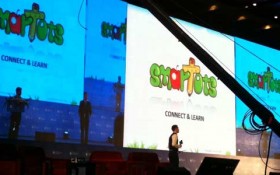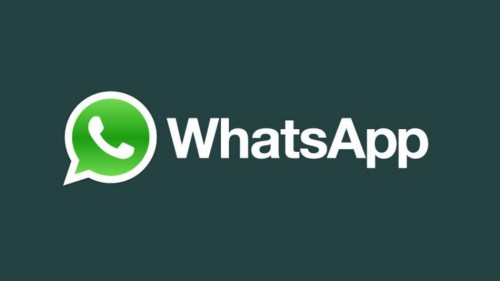We Are Social Asia Tuesday TuneUp #73
Chinese Government wants WeChat to pay fees
Chat apps such as WeChat have been making such an impact on the usage of traditional telecommunications services that Chinese telcos have been asking for subsidies as compensation for lost revenue. According to a source at the Chinese Ministry of Industry and Information Technology, WeChat may have to pay fees in the future though the mechanics are still being looking into. WeChat risks losing users if the company chooses to share the costs with users. Industry watchers are of the opinion that Tencent may choose to absorb the fees and fund it using other revenue streams such as gaming, online-to-offline e-commerce and other value-added services.
Tencent’s president commits to keeping WeChat free for users
In response to complaints from netizens about the prospect of having to pay to use WeChat, Tencent’s president has committed to keeping the app free for users. Tencent is the maker of popular chat app, WeChat, which has experienced phenomenal growth on the back of its value-added free voice messaging and photo sharing features.
WeChat starts real-name verification for Open Platform users
Tencent has started a real-name verification exercise for users of its Open Platform service, which allows them to create special accounts to facilitate product promotions. Tencent has shut down accounts of users who are unable to provide their real identities in a move that brings relief to many companies. By keeping the userbase authentic, WeChat reduces the possibility of malicious usage of the platform to discredit other users.
China’s Social Media Landscape
CIC has released their latest infographic depicting the social media landscape in China. The diagram classifies Chinese social media platforms into four categories, based on maturity of the networks and functional usage. The definition of the four categories are as follows:
Functional Networks – Provide basic support for or have been integrated into other platforms.
Core Networks – Covers microblogs, Social Network Services (SNS), Instant Messenger (IM), Mobile Social, Bulletin Board Service (BBS) and e-Commerce.
Value-Added Networks – Add-on services for core networks and other platforms such as Social Commerce and Social Gaming.
Emerging/Niche Networks – Platforms serving niche groups or that function an a relatively independent level such as Photo Sharing and Social TV.
Softbank-funded Chinese startup to build Facebook-esque app for kids
Backed by funds from Japanese mobile phone giant Softbank, Chinese startup SmarTots is building a social networking app that allows children in China to share art projects online and on mobile devices. Parents and other relatives will be able to comment or express approval via the app, in Facebook-ish style. This development comes at an opportune time as smartphone growth is expected to more than double to 460 million by 2017. Education is big business in China as parents are willing to pay top dollar to give their children an edge in an increasingly competitive world. On the government spending front, education accounted for 4 percent of its GDP in 2012 while the government’s investment in education grew at an annual rate of 22 percent.
Google to buy WhatsApp?
The latest from the rumour mill is that Google is in talks to buy WhatsApp for US$1 billion. WhatsApp is the most popular mobile messaging app and is said to pose a real threat to companies like Facebook and Google. Having been downloaded over a 100 million times on Google Play, the app occupies top position in Apple’s App Store in various countries. If this deal goes through, it would put the deal size in the same tier as Facebook’s purchase of Instagram in 2012.
New mothers radically increase online usage
BabyCentre have produced research on the huge increase in internet usage amongst new mothers. This demographic group, who spends 35% more time online than the average person, up their internet usage by 45% and mobile by 28% after becoming a mother. Factors like feeling more guilty, rushed and stressed all contribute to the change in behaviour, which also sees 68% change in their purchase criteria for everything. Mobile becomes an increasingly important device for the time-poor group, of whom 59% refer to their smartphone as a “do-everything device”.
US teens go mobile first
A report from the Pew Research Centre has shown how mobile internet usage is becoming ever more popular amongst American teenagers aged 12-17. Of those, 47% now own smart phones, while 74% use mobile devices to access the internet at least occasionally. Perhaps most interestingly, many of these are using the device as their primary mode of internet access: 50% of teen smart phone users, or 25% of all teens, mostly access the internet via their phone rather than PCs.
Social while multitasking
A March 2013 survey of US internet users has displayed how popular social networks are while multitasking. The graph below shows the frequency of access during different activities, noticeably slightly higher for Facebook than Twitter. A gender divide is shown depending on activity: women were more likely to access social media while watching TV, travelling or shopping, whereas men did so more at work, on the toilet or when drunk.

Social media gets the SEC’s blessing
The Securities and Exchange Commission last week blessed the use of social media for sharing market-moving corporate news, provided companies have disclosed to shareholders the channels they intend to use. Previously, there had been concerns that sharing news on social networks would violate rules on selective disclosure around financially pertinent information. However, an investigation into Reed Hastings, CEO of Netflix, ruled that his use of Twitter to announce 1 billion hours of views that month was acceptable, even after it resulted in an increase in share price. The ruling means that CEOs can now feel free to use Facebook or Twitter to broadcast news, even if it has potential to affect share price.
Mobile ad revenue at $4.11 billion for 2012
Mobile advertising revenue grew nearly five times to $4.11 billion from 2011 to 2012 and is expected to increase again by 77.3% to $7.29 billion in 2013. Google has historically earned the most from mobile display ads, but the entrance of Facebook and Twitter over the past year has seen the two networks earn hefty shares, with Facebook predicted to take the largest single share of mobile display this year at 29%. A 3-year forecast expects Facebook to remain ahead of Google for the next 2, before dipping behind again in 2015.

Facebook introduces Home
Last week saw a lot of speculation that Facebook were set to release a mobile phone. Ultimately, they announced “Facebook Home”, a piece of software for Android that, once installed, turns its host into an “always-on” Facebook device.
The system is much more visual than the current Facebook app, with the user’s home screen populated by photos and status updates, built around Zuckerberg’s vision of a “social phone” based on people and not apps. The system sees a number of benefits for the social network; not only can it look to further integrate with people’s lives, but the new, engaging format provides as way for mobile advertising beyond any other providers. Facebook have been quick to combat privacy fears, looking to make it clear that Home will not do anything that the current Facebook app doesn’t, particularly in relation to location services and other app data. You can read the full FAQ in their online Newsroom.
Facebook’s first TV ad
To launch ‘Home’, Facebook have splashed out on their first ever TV advert. It looks to depict the excitement ‘Home’ can bring to a boring business trip, as each swipe of the protagonist’s screen sees a new friend appear alongside him on the plane. Others might see the sunbathers imprisoned in overhead lockers and hipster disco in the aisle as a dystopian future vision of air travel. We’ll let you decide:
Facebook charging users to contact celebrities
Facebook has rolled out a set of charges for users to contact celebrities, ranging from 71p for lesser-known figures, including comedienne Miranda Hart, up to £10.68 for those with legions of fans, such as Olympic diver Tom Daley. This marks an expansion of paid messaging, which Facebook have previously experimented with when asking for payment in order to contact Mark Zuckerberg directly.
Twitter card updates
Twitter have announced a few updates for their “Twitter cards”, which can now display the likes of apps, products and photo galleries directly embedded in Tweets, as shown in the below screenshot. This displays an increased interest in immersive add-ons to Tweets, after the introduction of video-sharing app Vine earlier this year. Companies such as Amazon, Fandango, CNN and Soundcloud have already partnered with the system.

LinkedIn pushing ‘conversations’ by allowing ‘mentions’
Social platform LinkedIn is planning to increase levels of conversation within the network by allowing users to ‘mention’ one another, much like they can on Facebook. By starting to type a contact’s name, they will appear in a drop-down menu, from which you can select to ‘mention’ them; they will then receive a notification. The below slideshare includes more information on the changes.
Brand adverts on Instagram
Since their purchase of Instagram, Facebook have neglected to input paid advertising on the platform. In the meantime, a phenomenon has developed of celebrities and brands producing their own advertisements, from which Facebook gain no revenue (case in point, the below from pop artist Beyonce). It will be interesting to see if there follows an attempt to monetize such content.

We Are Social launch new adidas Energy Boost running shoes
We Are Social Italy ran a launch party to promote the new adidas Energy Boost running shoes. Beginning with an online content-production competition, Facebook users were asked to create a ‘card’ around the theme of ‘energy’ – 10 winners were then selected to join the exclusive BOOST™ launch party, attended by a number of celebrities. Further promotion came from outreach to key influencers, including footballers Riccardo Montolivo and Antonio Nocerino, rugby star Martin Castrogiovanni and basketballer Danilo Gallinari. The event saw a mammoth feat of vertical running by world champion Thomas Dold projected on to the side of the Grattacielo Pirelli, a Milanese skyscraper.
The American Heart Foundation’s ‘My Moves’ campaign
The AHA has produced a social campaign aimed at getting people to exercise more, asking fans to submit photos of their favourite activity via Facebook, Instagram or Twitter. Despite a lack of prize incentive, the activity has been successful so far, with thousands of photos submitted and the use of #MyMoves prevalent beyond the aforementioned networks.




